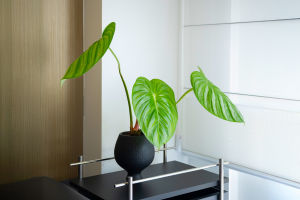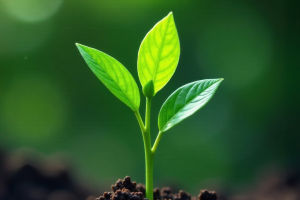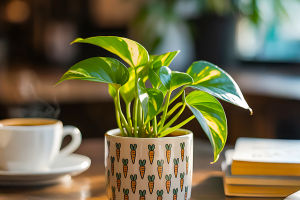Thriving Leaves, Happy Home
It starts with good intentions. You bring home a lush new plant, maybe a pothos or fiddle leaf fig, excited to add some green life to your space.
Fast-forward a month later: yellowing leaves, drooping stems, and the creeping feeling of failure. Sound familiar?
You're not alone—and the truth is, most of us have been caring for plants the wrong way.
Whether you're a newbie or someone who's been struggling with houseplants for years, we're diving into plant care tips that actually work. Not the vague advice like "don't overwater," but clear, experience-based tips you can apply today.
Let's dig in—your plants will thank you.
1. Understand *your* home's light, not just the plant tag
A tag that says "bright, indirect light" might seem helpful, but what does that really mean in your living room? South-facing windows get more direct sun, while north-facing ones get very little. Here's a quick way to test:
Put your hand in front of the sunlight and check the shadow it casts:
• Sharp shadow = direct light
• Blurry shadow = indirect light
• Barely any shadow = low light
This tells you far more than just guessing. Before you buy a plant, match its needs to your actual light conditions—not just wishful thinking.
2. Don't follow a watering schedule—follow the soil
The number one reason houseplants die is watering them too much. Ironically, many guides still recommend things like "water every 3 days." Instead, do this:
• Stick your finger into the soil—up to your first knuckle. If it still feels damp, wait a day or two.
• Use a moisture meter if you're unsure (they cost under $15 and are beginner-friendly).
• Know your plant: Snake plants, ZZ plants, and succulents like their soil to dry out completely. Ferns and calatheas prefer some moisture.
Plants don't live by calendars. They live by soil.
3. Repot for roots, not for looks
We've all seen those cute Instagram pots—but here's the truth: pretty pots without drainage are root rot traps. The best time to repot is:
• When roots are growing out the bottom.
• When the plant is "drinking" water faster than usual.
• When you haven't refreshed the soil in over a year.
Choose a pot with drainage holes and only size up one or two inches in diameter. Too big, and the soil retains excess moisture, stressing the plant.
4. Use filtered water for sensitive plants
Tap water can be harsh. Some plants like peace lilies, prayer plants, and dracaenas are especially sensitive to minerals like chlorine or fluoride. You might notice brown tips—that's usually not dryness, but water quality.
If you see this:
• Let tap water sit overnight before using, to let chlorine evaporate.
• Or use filtered or rainwater if your area's water is hard.
It's a small change, but for sensitive plants, it's a game changer.
5. Rotate your plants weekly
Ever wonder why your plant starts leaning to one side? Just like us, they reach for the sun. If you don't rotate them, they can grow lopsided or develop weak stems.
Once a week, give the pot a quarter turn. This helps:
• Encourage even growth.
• Prevent one side from burning or drying out.
• Make your plant look fuller and healthier.
6. Stop misting—start humidifying (for real)
Misting feels soothing, but it doesn't raise humidity for more than a minute or two. For tropical plants like calatheas, monsteras, or ferns, dry indoor air is a slow killer.
What works better:
• Use a small humidifier near your plant corner (especially in winter).
• Group plants together to create a microclimate.
• Place pots on a pebble tray with water—but make sure the roots don't sit in the water.
Humidity-loving plants will reward you with new leaves, faster growth, and fewer crispy edges.
7. Feed—but don't overfeed
Fertilizer isn't just a bonus—it's food. Without it, your plant may survive but won't thrive. Here's the lowdown:
• Use a balanced liquid fertilizer (like 10-10-10 or 20-20-20) during growing seasons: spring and summer.
• Once a month is enough for most houseplants.
• Skip fertilizing in fall and winter when growth slows down.
Overfeeding can cause root burn. So less is more—always read the label and dilute if needed.
8. Learn your plant's signals
Plants talk, just not with words. If you pay attention, they're pretty good communicators:
• Yellow leaves? Usually overwatering or poor drainage.
• Crispy tips? Could be low humidity or salt buildup.
• Droopy leaves? Often a sign of thirst—or sometimes stress from too much sun.
An online search can help you troubleshoot, but your best tool is observation.
So, Lykkers, how many times have you thought your plant was just "being dramatic" when really, it was trying to tell you something? The truth is, once we stop following generic advice and start tuning into what our plants actually need—light, soil, water, and love—they flourish.
If you've got a houseplant you've been struggling with, why not try just one of these tips this week? Then come back and tell us what changed. Your pothos, spider plant, or monstera might just surprise you.
-
 Plants, Meet DecorDon't just water your plants—style them! These smart tips will turn greenery into the star of your living space.
Plants, Meet DecorDon't just water your plants—style them! These smart tips will turn greenery into the star of your living space. -
 Plant Life CycleDiscover the fascinating journey plants go through, from seed to bloom, and what it takes to support their growth.
Plant Life CycleDiscover the fascinating journey plants go through, from seed to bloom, and what it takes to support their growth. -
 Indoor Plant Care EssentialsA Complete Guide to Help Beginners Care for Indoor Plants!
Indoor Plant Care EssentialsA Complete Guide to Help Beginners Care for Indoor Plants!
Contact to : xyjph123@gmail.com
Privacy Agreement
Copyright © boyuanhulian 2020 - 2022. All Right Reserved.
Privacy Agreement
Copyright © boyuanhulian 2020 - 2022. All Right Reserved.